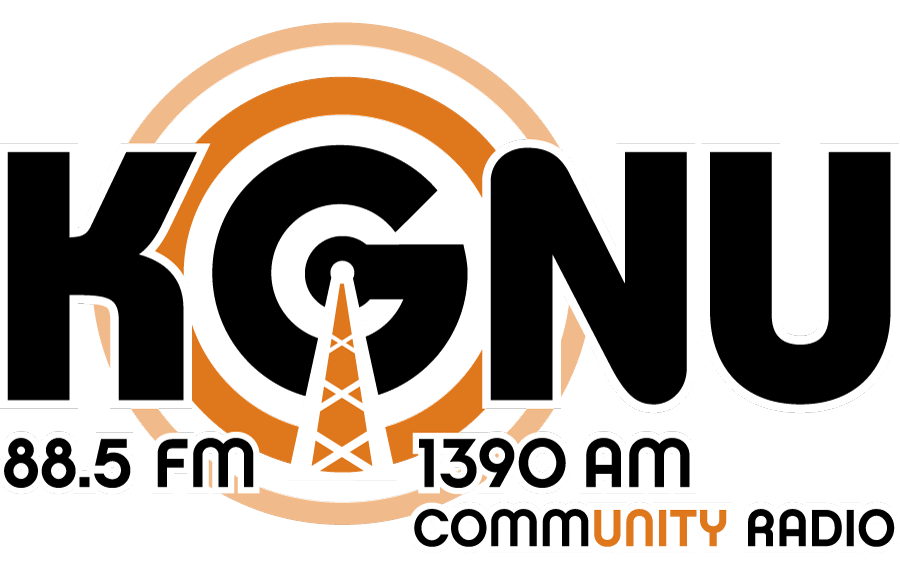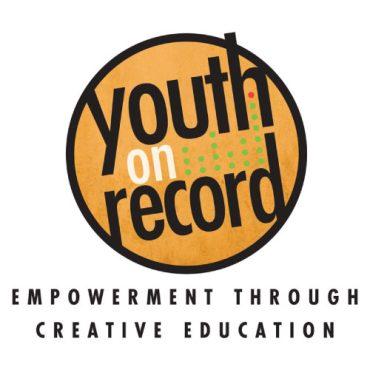The TRENDS podcast is a collaboration between the Community Foundation of Boulder County and KGNU. It dives deep into the community’s most pressing issues and explores the changes happening throughout Boulder County through the experiences of community members, especially those often rendered invisible by commercial media, to shed light on community challenges, solutions, and pathways forward for the county and the country.
Listen to the Gender Pay Gap TRENDS podcast episode below:
-
 play_arrow
play_arrow
TRENDS Podcast: The Gender Pay Gap KGNU News

[trends-podcast]

2020 marks 100 years since the passage of the 19th Amendment granting some women the right to vote in the United States. But a century later, women have not reached full equality in society in many areas, including how much they get paid.
The gender pay gap persists and it’s worse here in Boulder County, but some efforts are underway to close the gap.

Debbie Pope is CEO of the YWCA of Boulder County explains.
“The gender wage gap is exactly what it says. It’s where a male is earning a dollar and a woman is earning 74 cents to every dollar. And a lot of times this is regardless of their experience, or their education.”
The gender pay gap usually refers to the median annual pay of all women who work full time and year-round, compared to the pay of a similar group of men. Despite efforts to close the gap, it persists and it can be economically devastating over the lifetime of a woman.
The Boulder County YWCA has been focusing on how to support women in the workforce by providing affordable childcare and tackling bigger issues like the gender pay gap.

“I think in our country we are still a capitalist society, which means that… money is valued in this country. And it is a reflection of what we value in this country,” says Pope. “So when I just had a conversation with a woman the other day who is a top engineer, she has a great deal of education and experience and was really disheartened to find out that a colleague who had less experienced than her and less education, but was a man was making about twice as much as she was. And so just what that did to her morale.”
There are many factors that contribute to the gender pay gap. These include bias against working mothers, lack of paid maternity leave, the fact that men often dominate higher-paid professions, and direct pay discrimination. This is something that Michelle Frierson has looked at. Frierson is with the CU School of Education and is doing research into the gender pay gap for the YWCA.
Frierson says that women often work in professions that traditionally pay less like education, non-profit work or the service sector. But according to Frierson, even in professions where men and women are doing the same job, women are often paid less.
“Engineering and technology is one of those professions where males are making $55,000 a year, whereas females are only making $48,000. So there’s a big gap there that needs to be looked at,” says Frierson.

Resources:
- American Association of University Women (AAUW) – Find A Branch Nearby

But Frierson says there are other major structural issues that need to be addressed as a society that are currently limiting women in the workforce, like lack of maternity or family leave in the U.S..
“I think women definitely take on more duties that are unpaid and generally unrecognized than men do. And maternity leave coverage, just providing that it definitely increases women’s retention in certain professions. We do see a decrease in women who return to their job after they have had children or a decrease in women who decide that it’s a lot cheaper for them to stay home than to pay for childcare.“

There have been efforts to introduce family leave legislation at the Colorado State House. Such bills have failed 6 times. This year, lawmakers are hopeful they will pass some version of the Family Medical Leave Act, but researchers like Frierson say that while such legislation will help, until maternity leave is widely available, women will continue to sacrifice their careers to take the needed time off.
“I know that sometimes, teaching professionals especially, they end up taking off their own sick days in order to cover their maternity leave. So that also plays a factor in how much time they’ve spent on the clock. So it will help for companies to stop incentivizing hours spent on the job when we know that there are social norms that kind of require women to not have as many hours on the job… men also benefit from having families, but they don’t necessarily pay that cost the same way that women do,” says Frierson.
When you start to dig deep into the gender pay gap you find there are even more inequalities, with some women even further behind in terms of wages.
Kathy Oliver is the President of the Boulder branch of the American Association of University Women (AAUW), a national organization around since 1881, Oliver says the purpose of the AAUW “is to promote girls and women for equality through philanthropy, research and education.” As well as to “help women and girls be equitable in the workforce and in life.”
According to Oliver, if you look at certain women, like Native American and Latinx women, the pay gap is even wider.
“Asian women make the most money. They make about 87% of what a man makes. White women overall make about 79%. Black women make 63% and Native American women make 59%. American Indian women make 57% and Hispanic women make 54%.”
The AAUW has been researching the gender pay gap and Oliver echoes what researcher Michelle Frierson says about the underlying reasons.

“Women are paid less for the same work, which is atrocious. Women are over represented in low paying jobs and in high paying jobs. Women dominate professions such as healthcare, education, public administration and are devalued because these are seen as women’s work because women are caregivers. They face lower pay and promotion opportunities because they are assumed to be distracted and unreliable and that they would take time off for their family.”
Kathy Oliver says there’s a ripple effect with this gender pay gap for families and for society as a whole.
“Since 1967, women and mothers went from being a third of the population in the workforce, and now it’s closer to two thirds. So families now are increasingly relying on the woman’s wage. A majority of the mothers in the paid labor force are becoming responsible for their families. For 40% of women with children under the age of 18, who are their family’s sole provider, primary breadwinner, the gender gap can contribute to poor living conditions, poor nutrition, fewer opportunities for the children. For these women, it is so critical for the gap to close because it’s not just her that we’re affecting or affecting her family, it’s another generation.”
Some women are tackling this issue head-on. Gloria Casarez is a former math teacher but she is changing careers and moving into the financial industry to advise women on finances. She says that while women are earning less, they’re actually the ones making the decisions around money in the household.

“The research shows that actually for 60% of households, the money is managed by women. So when you have women who are doing financial planning professionally, you’re tapping into that percentage. So I think it’s a really important thing to think about… If you look at it from a business perspective to recruit more women would just expand the business.”
Cazarez says that we need to educate women from an early age on finances so they can be aware of things like the gender pay gap and be aware of financial decisions that will impact them through their life.
“I would love to talk to women who are in school, who are in college, because I don’t think it’s something that we’re taught in general to budget. We have to think about how we can teach women to manage and budget while they’re in college because after college you deal with all these loans and you have to pay back your loans. And if you don’t have a job right after college, what is your backup plan like? What kind of emergency fund do you have? Do you have one? Do you have any income coming in?”
Cazarez is changing careers. She used to be a teacher- not a high paying profession. She said that she doesn’t think she was paid less than male colleagues, but she does recognize that her career was impacted because she was a young woman.
“I have definitely experienced lack of [growth] opportunity. I have seen male coworkers who always have more accessibility to those opportunities, and they have always been asked if they want to move up by another male or even females. I have definitely worked in settings where people, they have the best intentions for the male employees and they want them to grow and they want to mentor them and they give them promotions and they give them the evaluations, positive evaluations about their work. Where I have not had that, I have had to ask for evaluations because I’ve seen males get all this feedback that they didn’t ask for,” says Cazarez.
Ana Martin, is a young African American woman working in the technology industry where women are not always represented and not always paid the same as men.
 “So there were moments where not only was I the only female at times, I was absolutely the only African American person in that room. And fighting for my equality, fighting for my voice, fighting for my salary was something I did on a yearly, monthly, weekly, daily basis to stand my ground and have my voice be heard as something that was the equivalent of a male without being perceived as an ‘angry black woman’. It was challenging because statistically speaking, for every dollar that every male that sat in that room with me made as a black woman, I make 60%..”
“So there were moments where not only was I the only female at times, I was absolutely the only African American person in that room. And fighting for my equality, fighting for my voice, fighting for my salary was something I did on a yearly, monthly, weekly, daily basis to stand my ground and have my voice be heard as something that was the equivalent of a male without being perceived as an ‘angry black woman’. It was challenging because statistically speaking, for every dollar that every male that sat in that room with me made as a black woman, I make 60%..”
As an African American woman, she is very aware of the pay gaps that exist not just between men and women, but between women of different races.
“So if Caucasian women make 80 cents on the dollar, I make 60 cents on the dollar and that 20 cents on an hourly, weekly, monthly annual basis accumulates into funds where we are doing the same work but I am valued less as an individual and you have one of two choices. You either stand your ground and you highlight your value and your worth and you look for advocates to support that or you lose your motivation because it can be challenging. It’s, demeaning. It’s, it is something that internally if you absorb it can hurt you. So you have to know who you are within and continue the fight. Because for every step, every progressive move that I make, there is someone else who could come behind me and not have to fight as hard because I’ve already made that headway.“
Martin says she would like to see young women and all women learn to find their voice to advocate for themselves and she would like to see women acting as mentors in the workforce.

“You have to have an advocate who is influential within their domain and they can move in transition. Any effort forward when I have been in difficult situations, I’ve been lucky enough, especially to transition into my current role in my career, I had an advocate. I had a Senior Director who said, I like the way you think, why don’t stop doing operational work and come over here and work on projects. And he literally transitioned me into project management and it changed the direction of my life, but it took him as a male that had influence over everyone within that particular department. And even when there were objections ‘she doesn’t have experience, she can’t do this.’ And he said, no, I like the way she thinks and she can do it. She’ll learn it, it’ll be fine and when he said it, it shut down the conversation.”
Mentoring in the workplace and providing support for women as they work to negotiate higher salaries is something the American Association of University Women also supports, according to Kathy Oliver of the AAUW Boulder Branch.
“The program that I’m working with called Start Smart And Work Smart, we teach women to negotiate their first salary or their next salary by placing a value on themselves, going out to sites such as Glassdoor.com, paychex.com, salary.com and finding out what the pay for the job is. And if you meet those qualities, qualifications, this is how you can negotiate your salary because you have done the research and you realize that, yeah, I’m worth say an accountant with a bachelor’s degree, it’s $50,000 and you have a bachelor’s degree and maybe an internship. $50k is what you should get no matter what your gender is. And that’s what we’re trying to teach the young women and the women in the workforce at with Work Smart is to do research and to become confident and to ask. Because if you don’t ask, they are not going to give it to you,” says Oliver.

Oliver feels it is especially important in Boulder to have programs like Work Smart because the gender pay gap in the county is actually greater here than in other parts of the state.
“In Boulder, it is not so good because with [some college or an associate’s degree] bachelor’s degree, you’re only getting paid 70% of what a man does. With a bachelor’s degree, in Boulder, you’re only getting 56% of what a man gets and a graduate or professional degree, it’s 57% and the country, it’s about 70% for all three of those categories. So Boulder is way behind the national percentages. So if you’re a woman, I don’t think Boulder would be a place you’d want to work.*
That is why the Community Foundation of Boulder County is working with the YWCA in researching why the gender pay gap persists here. Michelle Frierson is the researcher working on the project. She says if you look at the long-term economic impact of the pay gap, it is vital we understand why it persists.
“When you look at the value of a dollar, women are only making about 75 to 80% of that. Putting it into dollars generally makes people kind of stand back and go, wow, I’m for a woman living in Boulder. Particularly that can be the difference of about $8,000 a year. And when you think about the prices of housing or childcare, it’s like those are the kinds of things, especially for women of color that can put them right above the poverty line or also keep them right below it. This is almost $10,000 a year, I’m sure if you ask women what could they do with $10,000 extra a year? They definitely have somewhere that money could be going.”
The findings of the study into the gender pay gap in Boulder are due in summer of 2020.
Click here to check out the section of the Community Foundation’s 2019 -2021 TRENDS report focusing on the gender pay gap (page 55).

Related KGNU Coverage:
TRENDS Report Coverage:
Other Gender Pay Gap Coverage:

Story Sources & Resources:
- Debbie Pope, CEO YWCA Eliminating Racism Empowering Women
- Michelle Frierson, Graduate Student CU Boulder School of Education Gender Pay Gap Researcher
- Kathy Oliver, President of the Boulder Branch of the American Association of University Women
- Ana Martin, Senior IT Inclusive Excellence Committee Co-Chair Office of Information Technology
- Gloria Cazarez, CU Boulder Graduate and Prospective Comprehensive Financial Planner
-
 play_arrow
play_arrow
TRENDS Podcast: The Gender Pay Gap KGNU News
Podcast: Play in new window | Download


















